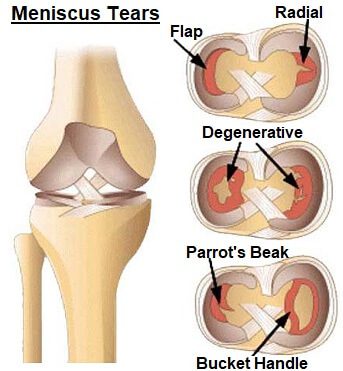Contents
Knee lock
What is a knee blockage?
The knee is one of the most complex joints in the human body. It joins the joint of the femur and the tibia and that of the femur with the kneecap.
It is a fragile and very stressed joint, which supports four times the weight of the body when walking. Knee pain is therefore extremely common at all ages.
The feeling of blockage can occur in various situations, for example after a trauma or a fall, or spontaneously, during usual movement.
What are the causes of knee blockages?
One of the most common causes of knee blockage is damage to the menisci, small, half-moon-shaped cartilages that are very mobile in the knee. Each knee has two menisci, one external and the other internal. In case of shock (often in young athletes) or with aging, the menisci can move, rupture or split, which causes severe pain and painful blockage of the knee, especially in extension (the knee is folded and cannot be extended, to varying degrees).
Blockages can also be due to the presence of bone or cartilage fragments that get stuck in the joint, for example after trauma or in cases of age-related degeneration of the joint.
Other causes can cause a feeling of blockage in the knee, including “patellar blockage” (or pseudo-blockage, according to doctors). The patella is the small round bone located on the anterior side of the knee. Unlike blockage due to ruptured meniscus, patellar blockage occurs during flexion and extension, often when attacking the step (after sitting for a long time), or on stairs.
Another common cause is “patellofemoral syndrome”, which occurs mainly in young people (and especially in girls). It causes pain on the anterior aspect of the knee, which occurs mostly when going down stairs or hiking, sitting or squatting for prolonged periods. Other symptoms may be present, including a feeling of blocked or tilted knee, as well as crunches.
Finally, the knee is one of the joints most often affected by osteoarthritis. This usually does not cause blockage, but the pain can be sharp and limit walking and movement.
What solutions to relieve knee blockage?
The solutions and treatments offered for knee blockages differ depending on the cause.
The “real” blockage, caused by an injury to the meniscus, is painful and requires resting the knee. A splint may even be recommended.
To relieve the pain that accompanies the blockage, analgesics such as paracetamol may be prescribed, or anti-inflammatory drugs (ibuprofen, ketoprofen), especially if the pain is associated with inflammation (swelling, redness). In this case, the application of cold ice packs and the elevation of the leg also make it possible to decrease the inflammatory reaction.
Surgery may be required for meniscus injury, if it limits physical activity and interferes with walking, and the meniscus is ruptured. The operation of meniscus is performed under arthroscopy, a technique that allows intervention in the knee using very small side openings, minimally invasive.
When the knee blockage is total and prolonged, the surgical operation can be performed urgently.
Finally, in the event of a knee injury, rehabilitation, physiotherapy or osteopathy sessions may be recommended to relieve the pain or to re-mobilize the joint and re-muscle the leg.
Read also on knee problems:Everything you need to know about the various musculoskeletal disorders of the knee Symptoms of osteoarthritis of the knee Osteopathy for knee problems |










